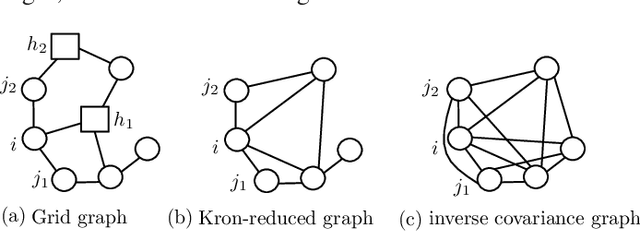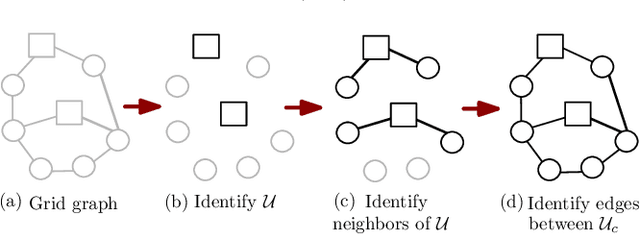Murti Salapaka
Learning Networked Linear Dynamical Systems under Non-white Excitation from a Single Trajectory
Oct 02, 2021

Abstract:We consider a networked linear dynamical system with $p$ agents/nodes. We study the problem of learning the underlying graph of interactions/dependencies from observations of the nodal trajectories over a time-interval $T$. We present a regularized non-casual consistent estimator for this problem and analyze its sample complexity over two regimes: (a) where the interval $T$ consists of $n$ i.i.d. observation windows of length $T/n$ (restart and record), and (b) where $T$ is one continuous observation window (consecutive). Using the theory of $M$-estimators, we show that the estimator recovers the underlying interactions, in either regime, in a time-interval that is logarithmic in the system size $p$. To the best of our knowledge, this is the first work to analyze the sample complexity of learning linear dynamical systems driven by unobserved not-white wide-sense stationary (WSS) inputs.
Estimating Linear Dynamical Networks of Cyclostationary Processes
Sep 26, 2020



Abstract:Topology learning is an important problem in dynamical systems with implications to security and optimal control. The majority of prior work in consistent topology estimation relies on dynamical systems excited by temporally uncorrelated processes. In this article, we present a novel algorithm for guaranteed topology learning, in networks that are excited by temporally colored, cyclostationary processes. Furthermore, unlike prior work, the framework applies to linear dynamic system with complex valued dependencies. In the second part of the article, we analyze conditions for consistent topology learning for bidirected radial networks when a subset of the network is unobserved. Here, few agents are unobserved and the full topology along with unobserved nodes are recovered from observed agents data alone. Our theoretical contributions are validated on test networks.
Tractable learning in under-excited power grids
May 04, 2020



Abstract:Estimating the structure of physical flow networks such as power grids is critical to secure delivery of energy. This paper discusses statistical structure estimation in power grids in the "under-excited" regime, where a subset of internal nodes do not have external injection. Prior estimation algorithms based on nodal potentials or voltages fail in the under-excited regime. We propose a novel topology learning algorithm for learning underexcited general (non-radial) networks based on physics-informed conservation laws. We prove the asymptotic correctness of our algorithm for grids with non-adjacent under-excited internal nodes. More importantly, we theoretically analyze our algorithm's efficacy under noisy measurements, and determine bounds on maximum noise under which asymptotically correct recovery is guaranteed. Our approach is validated through simulations with non-linear voltage samples generated on test grids with real injection data
Topology Estimation in Bulk Power Grids: Guarantees on Exact Recovery
Jul 15, 2017



Abstract:The topology of a power grid affects its dynamic operation and settlement in the electricity market. Real-time topology identification can enable faster control action following an emergency scenario like failure of a line. This article discusses a graphical model framework for topology estimation in bulk power grids (both loopy transmission and radial distribution) using measurements of voltage collected from the grid nodes. The graphical model for the probability distribution of nodal voltages in linear power flow models is shown to include additional edges along with the operational edges in the true grid. Our proposed estimation algorithms first learn the graphical model and subsequently extract the operational edges using either thresholding or a neighborhood counting scheme. For grid topologies containing no three-node cycles (two buses do not share a common neighbor), we prove that an exact extraction of the operational topology is theoretically guaranteed. This includes a majority of distribution grids that have radial topologies. For grids that include cycles of length three, we provide sufficient conditions that ensure existence of algorithms for exact reconstruction. In particular, for grids with constant impedance per unit length and uniform injection covariances, this observation leads to conditions on geographical placement of the buses. The performance of algorithms is demonstrated in test case simulations.
 Add to Chrome
Add to Chrome Add to Firefox
Add to Firefox Add to Edge
Add to Edge